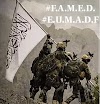The milestones, for the process of appointing a leader by the masses, in any system are identical: nomination, selection and affirmation. First, the various candidates are nominated and declared; then the selection process decides the winner from amongst the nominated candidates, who effectively becomes the leader. Finally, the appointed leader affirms this publically through some sort of ceremony, for example, the US President’s inauguration, where the elected President takes an ‘oath’ to uphold the constitution, and start the Presidency. The third stage is merely the confirmation process, to openly declare what has already been decided in the selection stage.
In the tribal society of 7th century Mecca, the process of nomination and selection was vastly simplified and merged, but the nation states of today, in comparison are far more complex and larger; various candidates will compete for power from amongst the millions of citizens. Hence, the processes are far more formal and structured. When the system is framed, these processes are codified, and the masses agree to obey the leader who is appointed through the selection process, this is where the contract takes place. The obedience of the masses is given to the leader appointed, on the condition that he upholds the constitution, and the laws and values.
This nomination and selection process has varied with time and place; hence, the Prophet (saw) was silent about who should succeed after his demise, and he was also silent about the process of appointing a Khalif; this is reflected in the variations in the appointment of the first four Khalifs, and the subsequent chaos that ensued through the rebellion of Mu’awiyah.
Given the complexity and the size of the nation states of today, there is broad endorsement for determining the leader in the selection process through election. The fact that the winner has the majority of the votes reflects a level of consensus, otherwise there is likely to be instability, especially where there are linguistic, sectarian and racial divides.
A similar process has to be used to appoint a Khalif. In any Muslim country, no individual will command complete support; there will always be various candidates competing for power, with varying levels of support. Election is the fairest way to determine the winner, as mass participation is a reality in today’s society, whereas in the tribal society of the 7th century, the matter of leadership was decided by the few.
Once the candidate wins in the selection process, he is the Khalif by definition, to whom the oath of allegiance is given as an affirmation. There are clear evidences to obey the Khalif and give him the oath of allegiance (Bay’a). Note the Bay’a is given to the Khalif not that the Bay’a makes the Khalif, yet, there is confusion that some people argue that Bay’a is used to appoint the Khalif. One cannot offer their Bay’a to someone on the assumption that he will become a Khalif in the future; otherwise, such a Bay’a is nothing more than an expression of support or a vote for a particular candidate competing for the position of Khalif.
In reality, the Bay’a where one offers the pledge to obey the leader can only be given to someone who is already in a position of authority. Once a legitimate Khalif exists, the obligation to give him the Bay’a is stated in many Hadiths. Thus, Bay’a is the affirmation of a leader, it reaffirms the contract, it is not a means to appoint a Khalif and that has never been the case; this can be corroborated by examining the appointment of the first Khalif.
After the demise of the Prophet (saw), some of the people gathered in the court of Banu-Sa’ida, to appoint a leader. However, there were no formal processes in place; the nomination and selection took place at the same time, it was simply a matter of narrowing it down to one person. One candidate was from the Ansar (helpers of Medina) and three were proposed from the Muhajir (emigrants of Mecca). As part of the elimination process, it was agreed that the leader should be from the Quraysh of Mecca, who were already seen as leaders of the Arabs, and thus would be acceptable to the majority. This automatically ruled out the Ansar after they accepted this point of view.
From the Quraysh, the three candidates were proposed based on their seniority as companions. They all concurred on Abu-Bakr and he was selected as the leader, and given the Bay’a as affirmation there. Next day, he took Bay’a from others as confirmation of his leadership and acceptance. The masses came to give the Bay’a to the new Khalif. Note, this process was more or less confined to Medina; it being the centre of authority, where most of the influential and significant personalities resided, and their consent mattered as they represented the many. Other tribes did not actively participate, distance and time being a factor.
Another reason for the significance of Bay’a is that tribal societies are unruly (especially the Bedouins), as tribes functioned autonomously and they could rebel at any point in time. This is particularly important for Mecca, where various tribes came together and appointed a leader; the affirmation process was significant as each tribe functioned autonomously, each one like a unit or a miniature version of a nation. The oath of the tribal leaders confirmed their obedience and the masses they represented. Similarly, when the two leaders representing the two major tribes of Medina (Aws and Khazraj) offered their allegiance to the Prophet (saw), it represented all the members of the two tribes.
What if there was a dispute next day, and the people refused to give their Bay’a to Abu Bakr? One could only speculate in such a scenario there would have been further dialogue to decide on another candidate, and they would go through the nomination and selection process again; this sort of problem would reflect the lack of formalisation or codification of the process of appointing a new leader. The only person who was alleged to have some reservation was Ali, however, both the Shi’a and Sunni sources confirm that Ali did not lead a rebellion, at the very least he accepted the leadership with some regret perhaps, but this means he approved.
This selection process, and the subsequent Bay’a given needs to be codified, this will prevent rebellion like that of Muawiyah - subsequently Islamic history was plagued with such cases, leading to the state’s fragmentation. The Bay’a is simply an affirmation process; one can hold public ceremonies where the influential people come to offer their allegiance to create further stability and quell any opportunists seeking to rise up using any pretext; collective affirmation in public would strengthen the legitimacy of the new Khalif.
Yamin Zakaria (yamin@radicalviews.org)
Published on 7/6/2010
London, UK





0 Comments